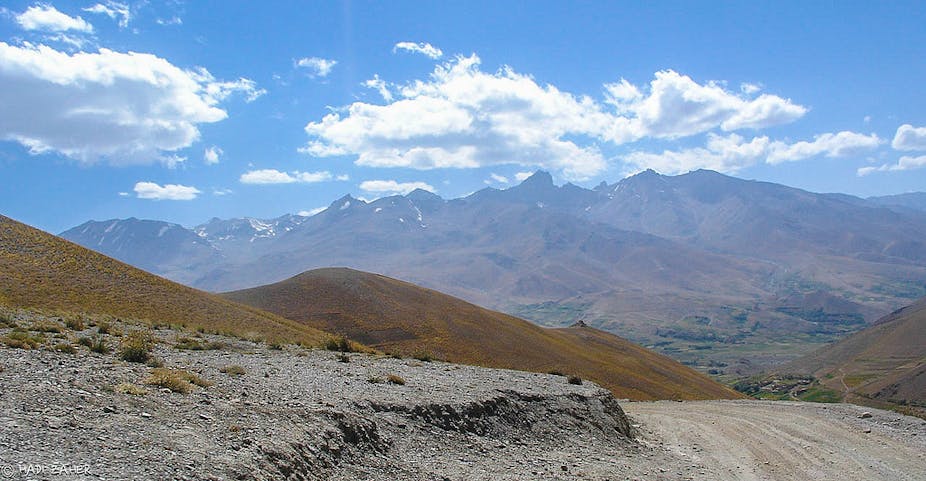On October 27, the last international troops closed their military camp in Southern Helmand Province and left Afghanistan, officially ending their combat role after 13 years of fighting. By the end of 2014, it’s expected that only 9,800 American troops will be left in the country.
Although Afghanistan continues to face security challenges, the completion of the planned transition imparts hope that the country has achieved enough political and military stability to move forward on its own. The most pressing question now is how Afghanistan will finance its still-fledgling armed forces, its state institutions and the revival of its beleaguered economy while preventing the return of the Taliban and Al-Qaida.
Billions of dollars in pledged international assistance have been pledged, but this is only a fleeting solution. Afghanistan needs a sustainable source of income to retake control of its destiny and reclaim its ancient role as one of Asia’s most important trade routes.
The answer lies in the mineral deposits spread across the country that are overflowing with copper, iron, lithium and other metals and minerals. How much lies in Afghanistan’s hills and mountains is still unknown, but they may be worth trillions of dollars.
Three decades of war
Since the fall of the monarchy in 1973, Afghanistan has never had a chance to take advantage of the richness of its land. The subsequent three decades have been marked by protracted turbulence, including the Soviet invasion of 1979, uprisings, civil wars and finally the rise of the Taliban and invasion by US-led forces. The continual struggles eliminated any opportunity to design and implement an economic strategy to discover let alone excavate and use its vast natural resources.
The limited work that has been done in this area was first conducted by Soviet geologists in the 1970s and 1980s. They identified abundant natural deposits that included iron, high grade chrome ore, uranium, lead, zinc, bauxite, lithium, emeralds, gold, silver and the “largest amount of copper.”
The World Bank says Afghanistan’s copper deposits in the Eastern Logar and the Central Bamiyan provinces are the largest in Asia and second-largest in the world, at over 1.2 billion tons. Additionally, the Afghan government confirms there are “extensive deposits of coal, marble, precious metal, game stones, gas and hydrocarbons.”
Perhaps the most up-to-date and intriguing claim about the country’s hidden wealth emerged in 2010 when The New York Times reported on a leaked internal memo prepared by US geologists and Pentagon officials. It said Afghanistan’s mineral deposits could fundamentally alter the country’s struggling economy.
The report helps confirm that Afghanistan could soon become a very wealthy country. Its lithium deposits alone are estimated to be worth as much as US$3 trillion, according to the Ministry of Mines and Petroleum.
Foreign investors wanted
The Afghan government in 2008 passed a law intended to open up its economy and spur foreign investment in the country’s key sectors. Because of the ongoing security and political challenges, the level of foreign investment remains limited.
Thus far China remains the single largest foreign investor. The Metallurgical Corporation of China and Jiangxi Copper Corporation are the two biggest companies contracted to invest US$4.4 billion in Aynak copper deposits. Chinese National Petroleum Corporation won the contract for Afghanistan’s gas in the northern provinces of Sari-pul and Jowzjan with an annual US$400 million investment. And last week, Afghanistan’s new President, Ashraf Ghani, paid his first official visit to China and signed a number of trade agreements, signifying the role of China in Afghanistan’s economy.
A wise and sustainable approach to Afghanistan’s natural resources, however, requires a strategy that involves many countries in the region and around the world, not just China. In particular, the countries in the coalition that ousted the Taliban and have been involved in Afghanistan for a decade now – whether fighting or building infrastructure – should be a part of that strategy.
The time is ripe for such a strategy, and it should be included in the upcoming London Conference in December. Afghanistan’s unity government will present its top economic policies and donors will unveil their post-withdrawal plans. The summit may be the last gathering of its kind, concluding one of the century’s longest wars – though NATO and the US plan to maintain an advisory role through 2025.
The ability to discover, extract and effectively manage Afghanistan’s natural resources will help guarantee the ultimate success of the transition to complete independence – along with the security agreement with the US and President Ghani’s fight against corruption. In the end, it could finally connect Afghanistan to its region and the world, turning the country once again into the region’s most valued trade route.

